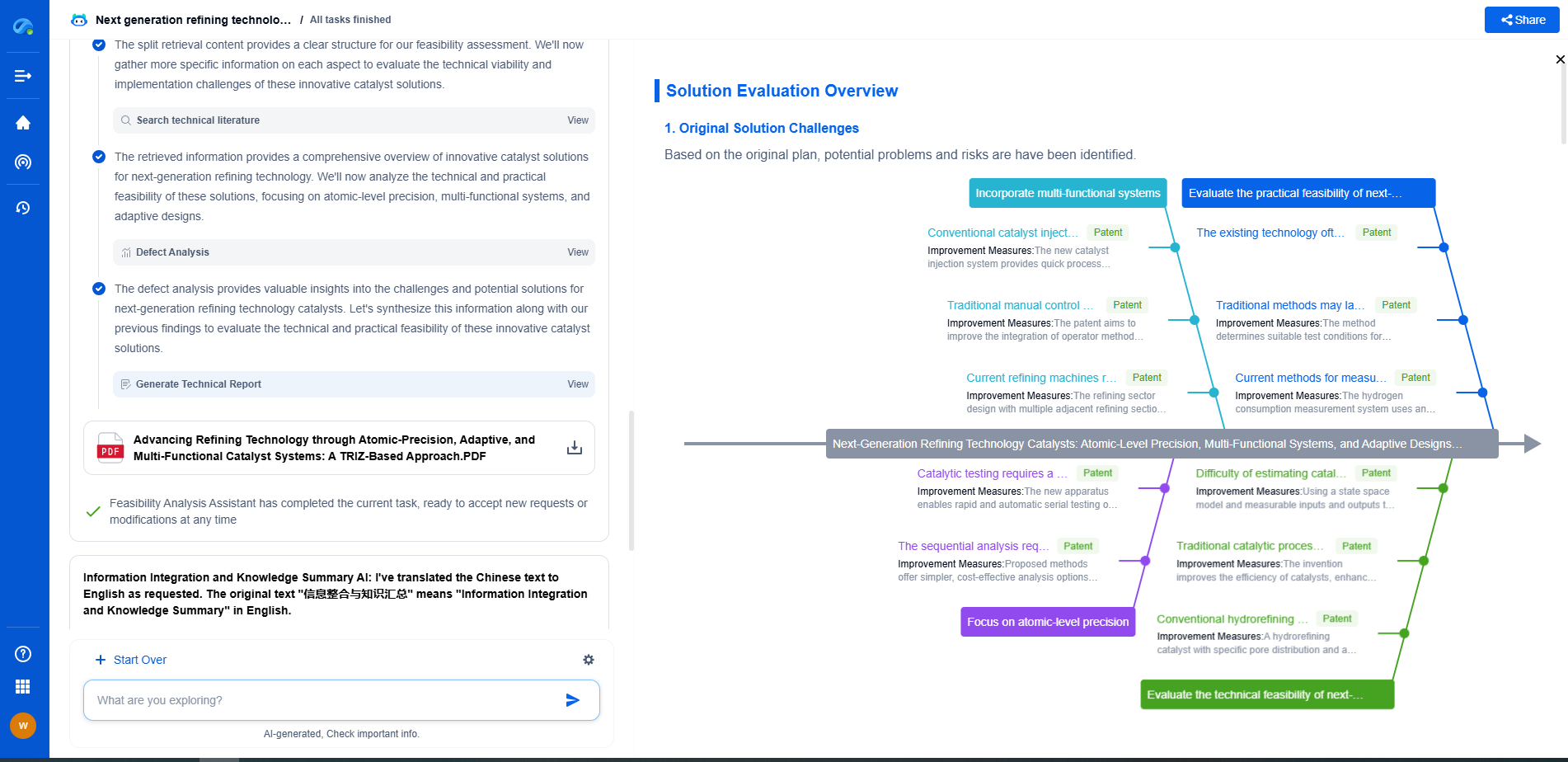Permanent Magnet vs. Electromagnetic Grippers: Which is More Efficient?
JUN 26, 2025 |
Grippers play a crucial role in the automation and robotics industries, serving as the "hands" of robots that enable them to interact with objects. Among the various types of grippers, permanent magnet and electromagnetic grippers stand out due to their unique operational characteristics. Both have their merits, but their efficiency can vary depending on specific applications. In this article, we delve into the efficiencies of permanent magnet versus electromagnetic grippers to help you decide which might be more suitable for your needs.
Permanent Magnet Grippers: How They Work and Their Advantages
Permanent magnet grippers utilize permanent magnets to generate a magnetic field that can hold ferromagnetic materials. One of the key advantages of permanent magnet grippers is their ability to maintain a strong grip without consuming any power. Once engaged, they remain in the same state unless a mechanical or magnetic intervention occurs. This feature makes them highly energy-efficient, as they do not require a continuous power supply to maintain their grip.
Additionally, permanent magnet grippers are known for their reliability and low maintenance due to the absence of moving parts and electrical components. They are ideal for applications where energy consumption is a critical factor or where a fail-safe grip is necessary in case of power loss.
However, one limitation of permanent magnet grippers is their on-off control. Switching them on and off can be less straightforward, often requiring additional mechanisms or magnetic shunts. This can complicate their use in dynamic environments where frequent engagement and disengagement are necessary.
Electromagnetic Grippers: Functionality and Benefits
Electromagnetic grippers, on the other hand, use electric currents to create a magnetic field. This allows for easier control over the gripping force, as the strength of the magnetic field can be adjusted by varying the current. Consequently, electromagnetic grippers offer a higher degree of flexibility and precision in handling a wide range of materials and sizes.
One of the significant advantages of electromagnetic grippers is their ability to be easily turned on and off, enabling them to handle tasks that require frequent switching with ease. This makes them particularly useful in automated production lines where speed and adaptability are paramount.
However, electromagnetic grippers require a continuous power supply to maintain their magnetic field, which can result in higher energy consumption compared to permanent magnet grippers. This need for power can also pose risks in environments where power failures may occur, potentially leading to dropped objects.
Comparative Analysis: Efficiency in Different Applications
When comparing the efficiency of permanent magnet and electromagnetic grippers, the decision largely depends on the specific requirements and constraints of the application. For scenarios where consistent, uninterrupted holding power is critical, and energy efficiency is a priority, permanent magnet grippers are often more beneficial. Their ability to maintain a grip without power makes them ideal for applications where safety and energy conservation are crucial.
In contrast, in environments that demand high flexibility, quick adaptation to different tasks, and precise control over the gripping force, electromagnetic grippers shine. Their ability to modulate the magnetic field with ease makes them suitable for diverse and dynamic industrial processes.
Considerations for Choosing the Right Gripper
Selecting the appropriate gripper involves careful consideration of several factors, including the nature of the materials being handled, the operational environment, energy availability, and safety requirements. Permanent magnet grippers offer a robust and energy-efficient solution where simplicity and reliability are essential. However, if the application demands high versatility and control, electromagnetic grippers provide the necessary adaptability.
Conclusion
In the ongoing debate of permanent magnet versus electromagnetic grippers, efficiency is determined by the specific operational demands and context. Understanding the strengths and limitations of each type can guide you in making an informed decision tailored to your particular needs. Both grippers have their place in the automation landscape, and the choice ultimately hinges on balancing energy consumption, control requirements, and the nature of the task at hand.
Ready to Redefine Your Robotics R&D Workflow?
Whether you're designing next-generation robotic arms, optimizing manipulator kinematics, or mining patent data for innovation insights, Patsnap Eureka, our cutting-edge AI assistant, is built for R&D and IP professionals in high-tech industries, is built to accelerate every step of your journey.
No more getting buried in thousands of documents or wasting time on repetitive technical analysis. Our AI Agent helps R&D and IP teams in high-tech enterprises save hundreds of hours, reduce risk of oversight, and move from concept to prototype faster than ever before.
👉 Experience how AI can revolutionize your robotics innovation cycle. Explore Patsnap Eureka today and see the difference.
- R&D
- Intellectual Property
- Life Sciences
- Materials
- Tech Scout
- Unparalleled Data Quality
- Higher Quality Content
- 60% Fewer Hallucinations
Browse by: Latest US Patents, China's latest patents, Technical Efficacy Thesaurus, Application Domain, Technology Topic, Popular Technical Reports.
© 2025 PatSnap. All rights reserved.Legal|Privacy policy|Modern Slavery Act Transparency Statement|Sitemap|About US| Contact US: help@patsnap.com

